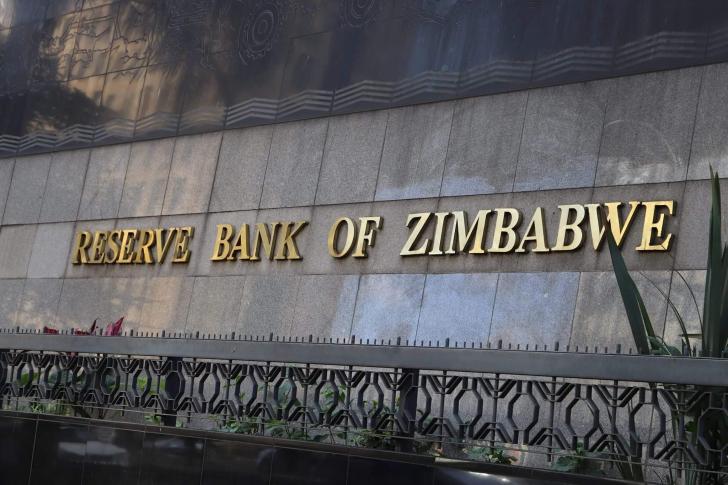News / National
Zimbabwe liquidates four failed banks
16 Jun 2025 at 14:08hrs |
12 Views

Four banks that collapsed between 2004 and 2008 have been officially liquidated, marking a significant milestone in Zimbabwe's financial sector. Hopewell Zinyau, Chief Executive Officer of the Deposit Protection Corporation (DPC), announced at the corporation's annual general meeting (AGM) last week that the residual assets of Afrasia, Interfin, Allied Bank, and Trust Bank were formally handed over to their shareholders following liquidation, which raised ZiG9.4 million. These funds will be used to compensate affected depositors.
Bank liquidation involves permanently closing the institution, selling off its assets, and using the proceeds to settle outstanding liabilities as far as possible. Customer accounts are typically closed, with cheques sent to account holders for the insured deposit amounts. Zinyau explained that during the 2024 review period, the DPC successfully discharged its duties as liquidator for five closed banks by recovering assets and distributing liquidation dividends to creditors and uninsured depositors. Four liquidation assignments were concluded, with total recoveries-including cash, treasury bills, and properties-amounting to ZiG9.4 million.
The period from 2004 to 2008 was marked by the failure and exit of some of Zimbabwe's largest banking institutions. To protect depositors in such events, the DPC was established under the Deposit Protection Corporation Act, which also created the Deposit Protection Fund. The DPC administers this fund and the Deposit Protection Scheme in Zimbabwe to provide a safety net for depositors.
At last week's AGM, Zinyau also highlighted an increase in the Deposit Protection Fund's size, which now stands at US$16.7 million as of March 31, 2025-a nearly 10% rise from US$15.2 million at the end of 2024, and more than double the US$7.8 million recorded at the end of 2023. This growth is seen as a positive step towards restoring confidence in Zimbabwe's financial sector.
Currently, the DPC offers deposit protection of up to US$1,000 per deposit class for contributory banking institutions and US$500 per deposit class for deposit-taking microfinance institutions. However, due to ongoing macroeconomic challenges, especially exchange rate volatility, the DPC is considering raising these coverage limits.
Funding for the DPC comes from premium levies, rental income, and investment returns. Zinyau noted that, at current cover levels, over 99% of depositors in contributory banking institutions and deposit-taking microfinance institutions are fully covered. Dividends paid to creditors of the five failed banks under liquidation increased by 25% from ZiG90,400 in December 2023 to ZiG113,500 in December 2024.
DPC Chairperson Canan Dube expressed optimism about the corporation's progress, stating that the scheme effectively covers 96% of individual accounts up to the insured limits, including through continuity banking arrangements.
The establishment of a depositor compensation scheme was seen as a crucial step in addressing the fallout from past bank closures. However, challenges remain in related sectors. The Insurance and Pensions Commission of Zimbabwe (Ipec) continues to grapple with compensating pensioners who lost funds during the hyperinflation crisis of 2008. Ipec Commissioner Grace Muradzikwa recently said progress has been made, but campaigners argue that the redress process has been too slow, leaving pensioners vulnerable amid ongoing economic hardships.
As Zimbabwe works to strengthen its financial safety nets, these developments signal an important stride towards protecting the savings of ordinary citizens and restoring trust in the banking sector.
Bank liquidation involves permanently closing the institution, selling off its assets, and using the proceeds to settle outstanding liabilities as far as possible. Customer accounts are typically closed, with cheques sent to account holders for the insured deposit amounts. Zinyau explained that during the 2024 review period, the DPC successfully discharged its duties as liquidator for five closed banks by recovering assets and distributing liquidation dividends to creditors and uninsured depositors. Four liquidation assignments were concluded, with total recoveries-including cash, treasury bills, and properties-amounting to ZiG9.4 million.
The period from 2004 to 2008 was marked by the failure and exit of some of Zimbabwe's largest banking institutions. To protect depositors in such events, the DPC was established under the Deposit Protection Corporation Act, which also created the Deposit Protection Fund. The DPC administers this fund and the Deposit Protection Scheme in Zimbabwe to provide a safety net for depositors.
At last week's AGM, Zinyau also highlighted an increase in the Deposit Protection Fund's size, which now stands at US$16.7 million as of March 31, 2025-a nearly 10% rise from US$15.2 million at the end of 2024, and more than double the US$7.8 million recorded at the end of 2023. This growth is seen as a positive step towards restoring confidence in Zimbabwe's financial sector.
Funding for the DPC comes from premium levies, rental income, and investment returns. Zinyau noted that, at current cover levels, over 99% of depositors in contributory banking institutions and deposit-taking microfinance institutions are fully covered. Dividends paid to creditors of the five failed banks under liquidation increased by 25% from ZiG90,400 in December 2023 to ZiG113,500 in December 2024.
DPC Chairperson Canan Dube expressed optimism about the corporation's progress, stating that the scheme effectively covers 96% of individual accounts up to the insured limits, including through continuity banking arrangements.
The establishment of a depositor compensation scheme was seen as a crucial step in addressing the fallout from past bank closures. However, challenges remain in related sectors. The Insurance and Pensions Commission of Zimbabwe (Ipec) continues to grapple with compensating pensioners who lost funds during the hyperinflation crisis of 2008. Ipec Commissioner Grace Muradzikwa recently said progress has been made, but campaigners argue that the redress process has been too slow, leaving pensioners vulnerable amid ongoing economic hardships.
As Zimbabwe works to strengthen its financial safety nets, these developments signal an important stride towards protecting the savings of ordinary citizens and restoring trust in the banking sector.
Source - The Standard
Join the discussion
Loading comments…





























